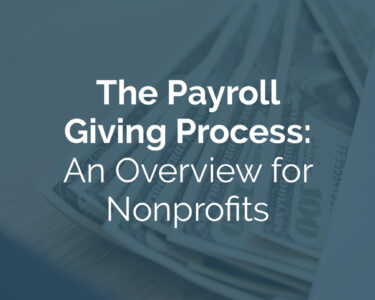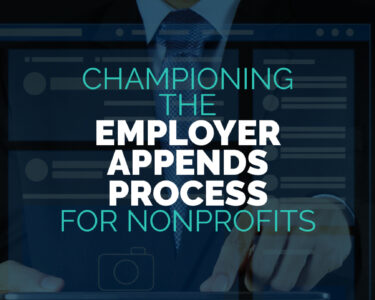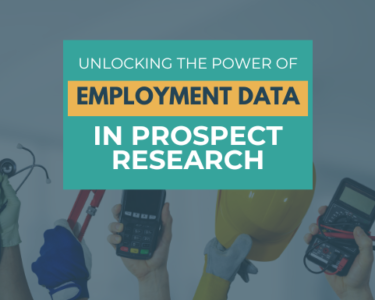Individualism. Competition. Risk aversion. Short-termism. Scarcity. Presumed expertise. Many of the norms by which philanthropy operates perpetuate the very narratives our sector seeks to change. In this series on the CEP blog, contributors who represent a cross-section of philanthropy examine some of the common ‘myths’ by which philanthropy operates and ask, “what if?”, offering approaches, interventions, and new visions for how philanthropy could operate for a more just world.
Since the November 2024 U.S. presidential election, the social sector has faced a perfect storm: rapidly escalating community needs, sudden and arbitrary federal funding cuts and private grantmaking at a standstill. It is no wonder that many are looking to philanthropy — with its trillions of dollars in endowments — to step up in this time of crisis.
While some foundations — including the Woods Fund of Chicago, Freedom Together, and MacArthur Foundation — have increased their payout rates, months into this crisis, many have not adjusted their spending.
The topic of foundation spending has long been an interest of mine because spending is a funder’s primary tool for social change. I’ve written in the Stanford Social Innovation Review about values and mission-aligned approaches to spending decisions, and have supported dozens of foundation boards in evolving their spending approaches.
Yet, the wide gap between the urgent demand for funding and the tepid response from foundations will not be resolved with a shift simply in spending policies. Rather we must examine and evolve our deeply held narratives about the purpose of foundation spending.
Perpetuity
The most common and powerful spending story in philanthropy is perpetuity. “In perpetuity” is defined as “for all time; forever,” and many foundations operate with a goal, explicit or implicit, of existing indefinitely. This story of perpetuity becomes the key operating principle when it comes to spending: Trustees make decisions that prioritize the foundation’s desired timeframe over addressing urgent needs that put communities and the planet at risk.
This narrative and norm is so deeply embedded that many foundations operate in service of it, even when it is not an explicit mandate in their bylaws or charters. Each time trustees approve budgets designed to preserve the foundation’s financial ability to exist in perpetuity, they reinforce the idea that the foundation’s survival in the far future is more essential than the needs of communities today.
Critics of operating in perpetuity have long raised concerns about how it removes accountability, dilutes impact, and fuels generational inequality. In “Just Giving,” Rob Reich summarizes nineteenth-century philosopher John Stuart Mill’s views on perpetuity: “Under the guise of fulfilling a bequest, a foundation transforms a ‘dead man’s intentions for a single day’ into a ‘rule for subsequent centuries.”
Philanthropy’s track record suggests that a spending rate shaped by the perpetuity mindset leads to slow and cautious grantmaking. Most private foundations give close to the legally required minimum of five percent each year, regardless of pressing needs and opportunities to advance their mission. Unlike other funding goals, perpetuity requires prioritizing the foundation’s continued existence over the very mission it was created to serve. Simply put, if fulfilling a foundation’s mission or strategy requires greater investment today, a perpetuity goal may directly conflict with that purpose.
Spend Down
An alternative approach gaining traction in philanthropy is to “spend down” — the commitment funders make to giving all of a foundation’s money away within a set timeframe — one that is typically chosen by the donor or foundation leadership.
A growing number of funders are embracing this approach, recognizing that resources can have greater impact when deployed in communities now rather than preserved for an uncertain future. Some foundations, like the Kataly Foundation, refer to this approach as “spend out,” emphasizing the urgency of moving capital out of endowments and into communities where it is most needed. The Lankelly Chase Foundation goes even further, using the term “redistribute” to describe its commitment to shifting assets into community control.
While perpetuity downplays right now, a spend-down approach prioritizes it. One could conclude that these two are in direct conflict with one another, but in fact these stories share a common thread of concern with a specific spending timeframe that is almost always determined by the donor.
A ‘Drop in the Bucket’
A more subtle but equally powerful narrative that shapes funding decisions is the “drop in the bucket” story, which is the idea that a foundation’s contribution is too small to make a real difference. This rationale often emerges in moments of crisis when funders hesitate to increase spending, convincing themselves that their resources won’t make a meaningful enough impact.
This avoidant narrative often emerges in moments of budget cuts, when funders prefer not to grapple with the consequences of reducing grantmaking, and it is a way of rationalizing inaction. The underlying message is: “Our funding won’t change the outcome, so why stretch beyond our usual limits?”
In a sector that collectively holds $1.6 trillion in assets (and growing), it’s striking how often funders — big and small — embrace and wield this story of insignificance, which serves as a justification for maintaining the status quo in times of rapid change — or of great need.
It was widely invoked in early 2020 when some foundations hesitated to increase grantmaking despite the massive needs created by the pandemic. While some funders stepped up and increased their giving, others framed their resources as mere drops in an ocean of need. We hear this argument again today as funders contend that the scale of need in this moment is so large, that any increase in spending they might make would just be “a drop in the bucket.”
This individualist framing ignores the power that philanthropy has to move resources in collective ways that catalyze broader transformation.
A Spending Story for These Times
Beyond perpetuity, spend down, and “drops in buckets,” there is an emerging narrative to guide foundation spending in this moment — one centered not on an arbitrary time frame, or on the insignificance of our giving but on the purpose of the spending, and of philanthropy more broadly. Rather than being bound by an absolute commitment to existing forever or giving it all away now, philanthropy could instead align its spending with the urgency of the moment, the purpose of its resources, and a reimagined understanding of philanthropy’s role as a sector that moves abundant resources in alignment with community needs and dreams.
Purpose-driven spending calls on foundations to allocate resources based on their mission, values, and the stakes of the moment. It requires engaged, strategic governance, thoughtful stewardship, and a willingness to respond to current needs rather than defaulting to outdated financial models designed for a different time. Purpose-driven spending invites us to build a more dynamic, responsive philanthropy that meets the urgency of our time–flipping the question from, “How long can we exist?” to, “How can we do the most good with the resources we have, right now?”
The activist and philosopher Grace Lee Boggs famously asked, “What time is it on the clock of the world?” For philanthropy, a purpose-driven spending story has its eyes set to the world’s clock in order to understand what is needed in this moment and to lay a foundation for the future we are building — not just for donors, but for all of us.
When we center purpose in foundation decision-making, our spending is no longer “a drop in the bucket.” Instead, we join communities in creating a wave of change.
Dimple Abichandani is an advisor to foundations and donors, the author of “A New Era of Philanthropy,” and a Board Member of Solidaire Network.
👇Follow more 👇
👉 bdphone.com
👉 ultractivation.com
👉 trainingreferral.com
👉 shaplafood.com
👉 bangladeshi.help
👉 www.forexdhaka.com
👉 uncommunication.com
👉 ultra-sim.com
👉 forexdhaka.com
👉 ultrafxfund.com
👉 bdphoneonline.com
👉 dailyadvice.us




